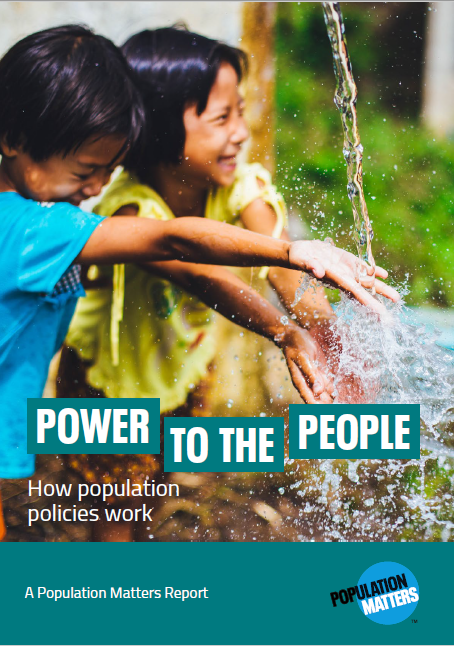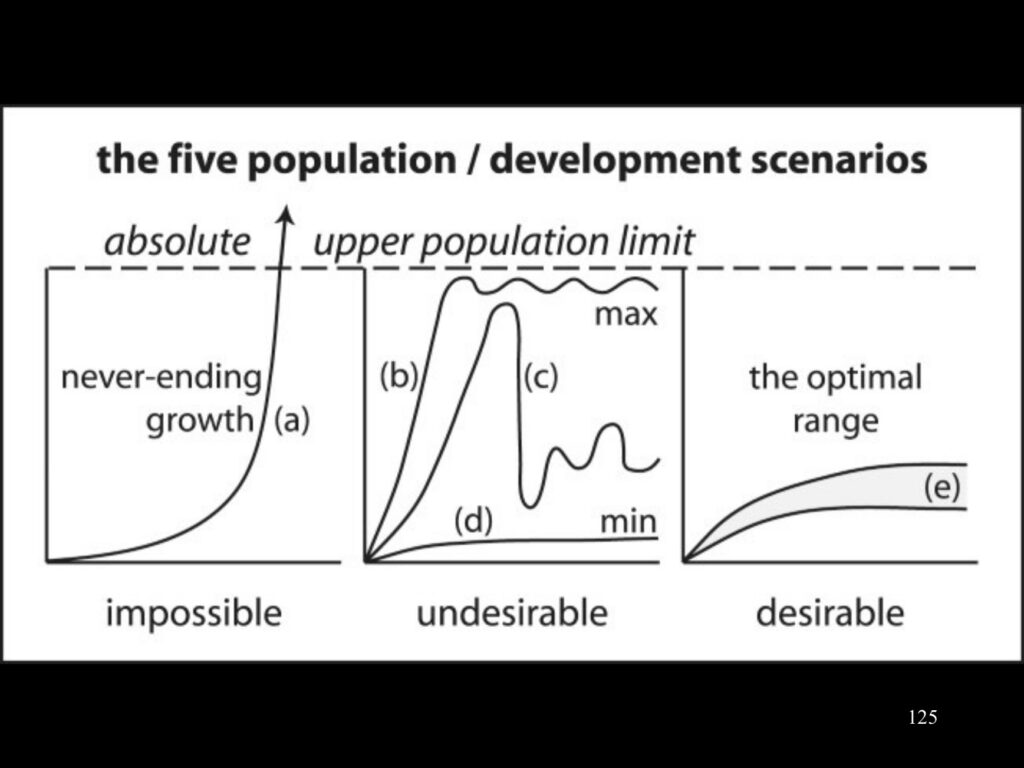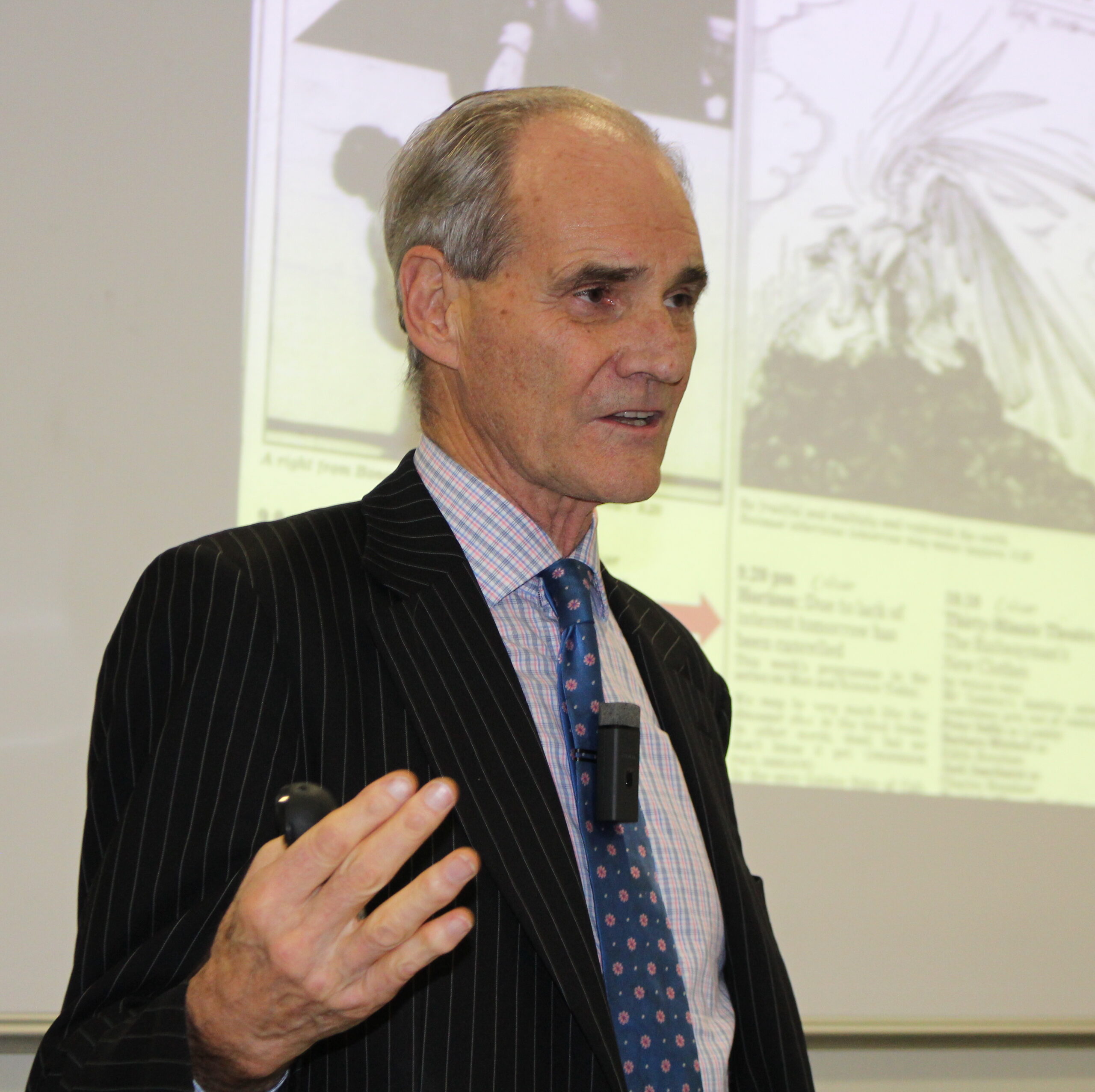
A warning, an apology and a promise
Decades as a medical professional and environmental activist makes Population Matters’ Patron John Guillebaud well placed to talk about population and the need for voluntary family planning and women’s education. We spoke to John about exactly how we can improve millions of lives, and the outlook for our planet.
John Guillebaud (pronounced “GIL-BOE”), Emeritus Professor of Family Planning and Reproductive Health, University College London (UCL), in 1993 became the first clinical gynaecologist in the world with that title. He is the author/co-author of 300 publications, including nine books available in 10 languages. Dr Guillebaud is an ex-Chair and current Patron of Population Matters and the creator of the 1994 Environment Time Capsule (Eco-TC) project.
When and how did you get into the speciality of contraceptive technology, for both genders?
While still a medical student, an optional evening lecture was my first alert to the dire environmental risks of the population ‘explosion’. It changed my life. I learnt that my profession, by dramatically reducing death rates while birth rates remained high, bears sadly some responsibility – unintendedly – for the increase: one billion in the early 1800s, 3 billion then (in 1959), and over 8 billion now.

Being alarmed about the future of all life on the finite planet, restoring balance through contraception, therefore, seemed my obvious career path. In due course, this led to higher degrees in surgery and gynaecology, conducting about 4,000 vasectomies and a similar number of women’s fertility-regulating procedures such as IUD insertions and sterilisations, plus ongoing reproductive health research and training.
in 1994, you made an “apology” to the Future – by the burying of environment time capsules. tell us more about that. why did you do it?
Simply, my ever-increasing anxiety about the future of life on earth, after more than 30 years of my population and environmental activism, reinforced by three important statements two years earlier in 1992.
First, the World Scientists’ Warning to Humanity had been signed by over half the living Nobel Laureates in Science:
The earth is finite. Its ability to absorb wastes and destructive effluent is finite. Its ability to provide food and energy is finite….Pressures resulting from unrestrained population growth [then 5.4 billion] put demands on the natural world that can overwhelm any efforts to achieve a sustainable future…. We must accept limits to that growth.
(A reiteration of this, the Second Scientists’ Warning to Humanity, was signed by 15364 scientists (I was one) in 2017.)
Also in 1992, Maurice Strong, Secretary General of the UN’s Earth Summit in Rio, posed the stark choice: either we stabilise the world’s population, voluntarily, “or if we do not do it, nature will, and much more brutally.”
Then, in a third quote that year James Grant said, more positively:
[Family planning] could bring more benefits to more people at less cost than any other single technology now available to the human race.”
UNICEF, 1992
He went on, importantly: “…it is not appreciated widely enough that this would still be true if there were no such thing as a population problem” since it is preventive medicine, a humanitarian intervention. Why? Maternal mortality remains stubbornly high, worldwide, through disregard for the truism that you cannot die from a pregnancy you don’t have – through having had the choice not to conceive.
Those 1992 statements together triggered my ongoing Apology to the Future project, which was based on the saying: “We have not inherited the earth from our grandparents, we have borrowed it from our grandchildren.”
tell us more about the Eco-time capsules.
Delivering a Warning, an Apology and a Promise, Eco-TCs were buried in Botanic Gardens at Kew, Ness on the Wirral (UK), South Africa, Seychelles, Sydney NSW and Mexico.
The Eco-TCs were buried on or around World Environment Day in June 1994 and will be disinterred in 2044 (after exactly 50 years and by our ‘grandchildren’). They contain relevant 20th-century artefacts labelled “BAD”, such as a pot of fossil fuel and a CFC aerosol], and “GOOD”, including my own cycle pump and – of course – a pack of contraceptive pills. Alongside those are ‘official’ and unofficial Letters of Apology, including entries by hundreds of schoolchildren in a nationwide competition for the best letters, poems and pictures that apologised for the anticipated damage to our grandchildren’s ‘loan’ to us.
These also pledged action: such that hopefully the word ‘sorry’ might never be needed!
(My son Christopher Guillebaud’s video “encapsulates” all this, and more, here.)
why is voluntary family planning/contraception SO vital for planet Earth?
In 1971, Paul Ehrlich (author of The Population Bomb and PM Patron) and the renowned environmental scientist John Holdren devised a fundamental equation which brings together the only three factors causing human-induced ecological damage or Impact (I) on the planet:
- Per-person Affluence (A) – which also always means effluence (meaning land, air and water pollution, above all by greenhouse gases leading to the climate emergency), and renewable or non-renewable resource consumption.
- Per-person Technology factor (T) – that can be ‘green’ or otherwise – something which is as real as its accurate measurement is challenging.
- Population (P), the number of persons. That can be seen as the “upstream” causative factor, having increased seven-fold since 1850 and which is still rising by around 80 million per year, or one million every 4 days.
These factors combine together, such that:
I = P x A x T
That means our numbers will increase our impact. UCL Professor of Climate Science Chris Rapley highlights the climatic relevance of that P-factor in another truism: “an absent human has a zero carbon footprint”….. absent by never having been born because of the accessibility of voluntary contraceptive care to the potential parents!
Or as I put it:
“The greenest energy of all…is the energy not used, at all”.
(For example, through there being fewer energy-using humans.)

Although it is essential for all humans to minimise their (carbon) footprints as individuals and across society, this will not suffice without addressing (always wisely and compassionately) the number of feet….
this simple idea is often controversial. why do you think that is?
Though it is hardly rocket science to see population growth as being the “driver” of human-induced climate disruption and biodiversity carnage, intervening in human reproduction raises intensely personal issues and has become fraught, with many taboos. This has led to a very persistent myth that any quantitative concern about human numbers must be, intrinsically, coercive, inducing accusations of racism and the like.
How therefore should contraception be delivered, to women – and men?
First, how shouldn’t it be delivered? Never with a hint of compulsion, however anxious leaders may become about numbers. There have been disgraceful aspects of programmes historically run by population “zealots” (eg in India in the mid-1970s or in China after 1980).
Coercion is abhorrent – and also unnecessary. Since the mid-20th century, numerous countries have experienced TFRs (total fertility rates or “average family sizes”) reducing from above 5 to replacement fertility or below, now, through nothing more than removing a range of barriers to communities’ contraceptive needs. This demolishes the myth that compulsion is required. How can it be coercive anyway, to remove barriers that are preventing people from accessing something they want – or come to want?!
So what works? Has the voluntary approach worked in the past?
Yes, whenever those barriers to women’s choice of contraception are removed it gets used. Sexual and reproductive health and rights (SRHR) provision is optimal if it is rights-based and removes well-known barriers to women’s access to voluntary family planning (VFP), while simultaneously achieving full gender equity, especially in education.

The barriers with respect to VFP are both tangible (eg contraceptives unavailable) and intangible (cultural, religious and mis-informational), impeding the choice by women and girls to access family planning. There are continuing barriers to women’s education that also require removal. ‘Education’ should include environmental education and be via both schools and media, the latter as promoted and provided by the excellent Population Media Center.
What do those barriers to VFP and education for women share in common, worldwide?
They are forms of gender disempowerment mainly caused by men – who might often benefit greatly themselves from re-education in gender issues- sadly including varied forms and degrees of abuse. For starters, more men might ‘step up to the plate’ and have a vasectomy, as promoted by World Vasectomy Day, which is such a brilliant option, yet one that remains almost completely absent in very many countries.
How impactful might this combined approach be in future in regard to climate change?
The answer is ‘very’: Project Drawdown recently demonstrated the potentially massive reduction in world GHG emissions achievable by increasing women’s access to education plus VFP within women’s reproductive health.
Do you see this as substituting for other interventions for the climate emergency?
No way. The primary, quicker-acting, objective remains to keep fossil fuels in the ground. This is quite simply not happening, with the required urgency or at the necessary scale. Yet, proper resourcing of world contraception-care services (eg increasing them to at least 2% from the current derisory 1% of international aid) is an important ADDITIONAL climatic intervention, needed now (though slower-acting because of the phenomenon of population momentum). Indeed it is the most cost-effective one there is.
Won’t highlighting population and VFP make affluent individuals (in all nations) feel there is no need to reduce their own consumption?
Though often said, there’s no evidence this has to happen. Why shouldn’t affluent individuals gain the insight to reduce their fossil energy consumption and moreover see the logic in planning a small family themselves (given the far greater lifetime GHG emissions by high consumers’ children) – and yet ALSO advocate for better contraception care worldwide?
Don’t some people ‘victim-blame’ couples in least-developed countries for their currently high birth rates while they suffer most from climate change and also have the lowest per-person GHG emissions?
That is horrendous! But it’s not what raising the issue of population is about at all. How can it be blaming anyone, to advocate for better resourcing of contraception care? It meets a need expressed by women themselves to control their fertility (well over 200 million from recent survey data).
Furthermore, climate justice requires the poor to escape poverty, meaning their per-person emissions actually increasing in the short term. The harm that will cause the planet will obviously be less if there are fewer children in those currently low-consuming settings (through better access to rights-based contraception care) since it means fewer significant GHG-emitters than otherwise in the future.
How did you get involved with Population Matters?
I joined in this enterprise (obviously, given my views!) from the outset, as a friend of David Willey when he was the primary Founder in 1991. It was initially known as the Optimum Population Trust (OPT), a name which it still has in its charitable status documentation. The name draws attention to an important concept, that an optimum human population exists (see Figure 1), one in harmony with all non-human life, and one we have sadly already well exceeded, with many ‘undesirable’ consequences.

what are your concluding thoughts?
It gives me/us zero pleasure to be proved right, in our warnings over so many decades, expressed by the Scientists’ Warnings and in my eco-TC project. There are, sadly, probably more than enough humans already here to comprehensively trash this fragile and beautiful planet before the end of this century, through climate change and the collapse of biodiversity. What is totally unavoidable and certain is an eventual return to numbers that permit sustainability. The only question is how?
Even in the ghastly worst-case “perfect storm” scenarios, birth reduction through VFP does not lose its urgency. If billions of humans are to suffer and die prematurely, along with much non-human life, in the looming dystopia of fires, hurricanes, floods, droughts, famines, pandemics, wars and societal collapse of the later decades of this century, contraception care becomes a valuable measure if only to reduce the number to so suffer.
_________________________________________________
As well as being Population Matters’ Patron, John Guillebaud is Emeritus Professor of Family Planning & Reproductive Health, University College, London, and past Medical Director, Margaret Pyke Centre for Family Planning.

